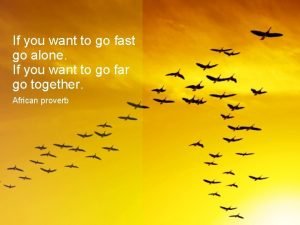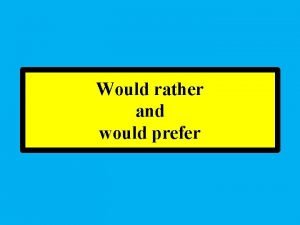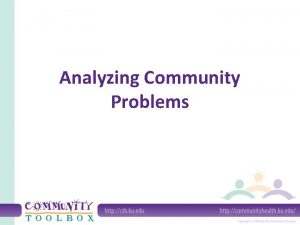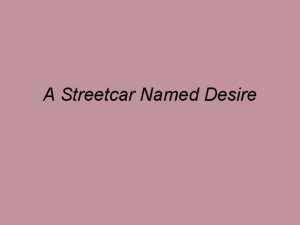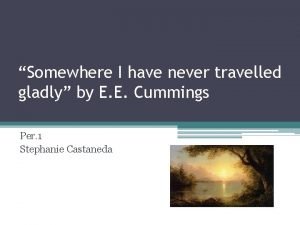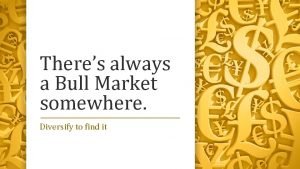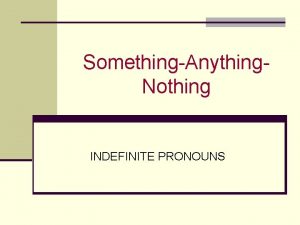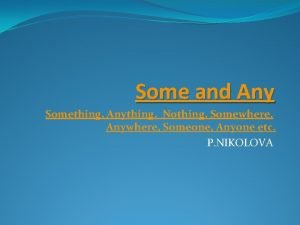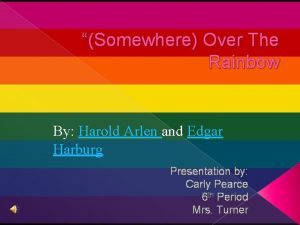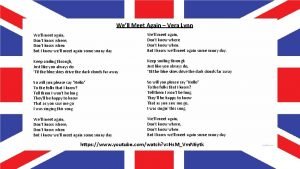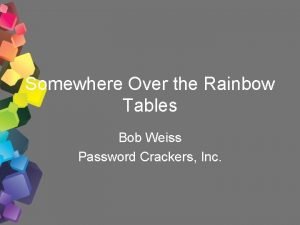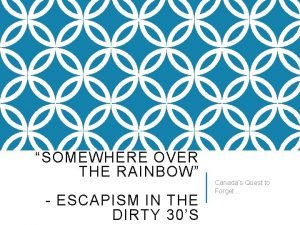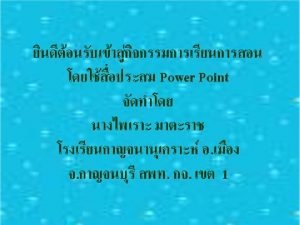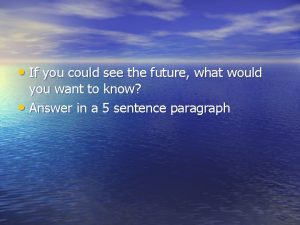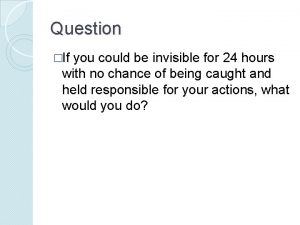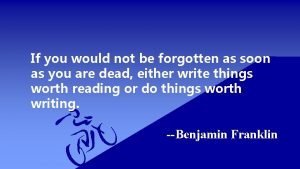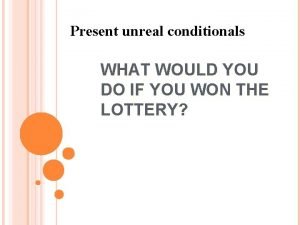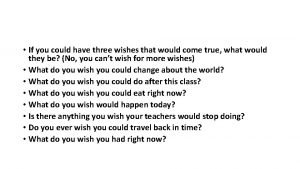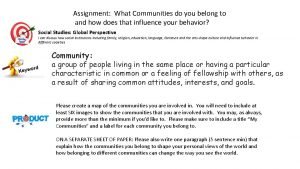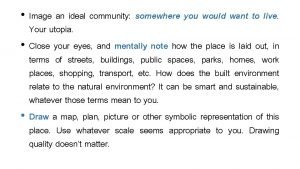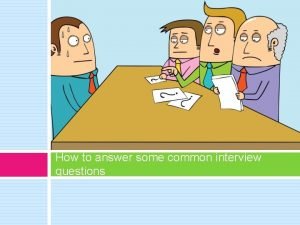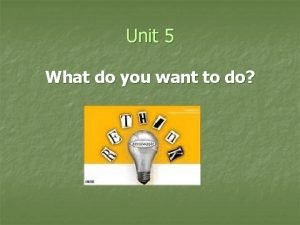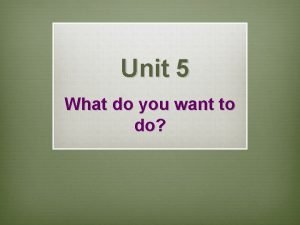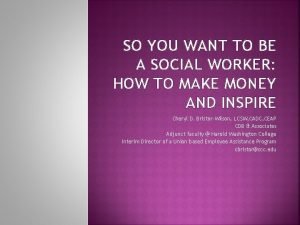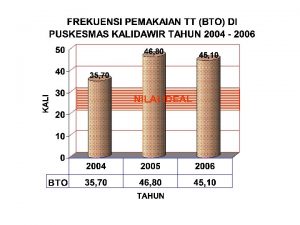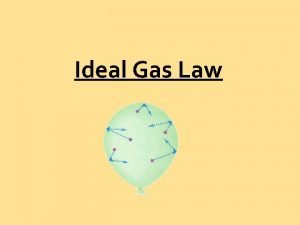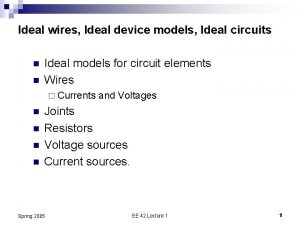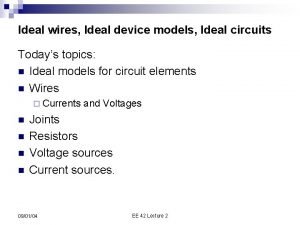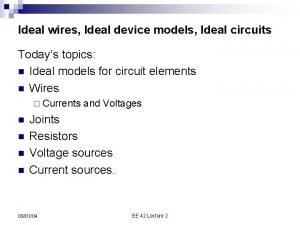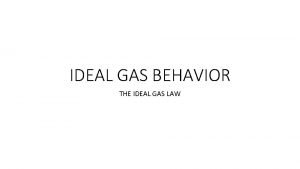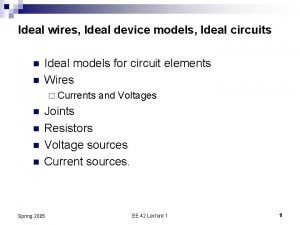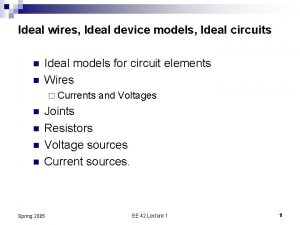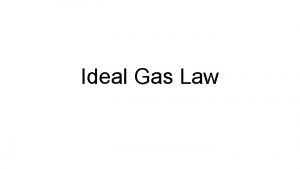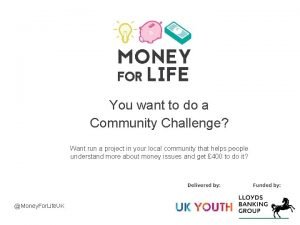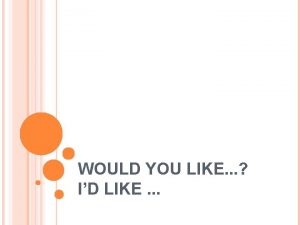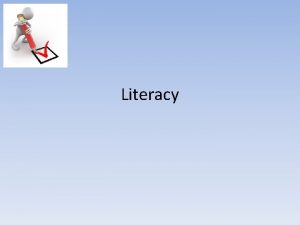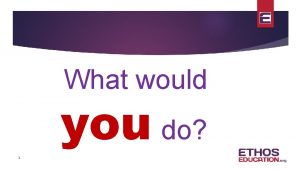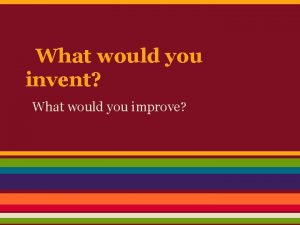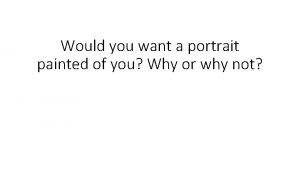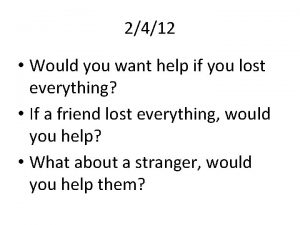Image an ideal community somewhere you would want



































- Slides: 35

• Image an ideal community: somewhere you would want to live. Your utopia. • Close your eyes, and mentally note how the place is laid out, in terms of streets, buildings, public spaces, parks, homes, work places, shopping, transport, etc. How does the built environment relate to the natural environment? It can be smart and sustainable, whatever those terms mean to you. • Draw a map, plan, picture or other symbolic representation of this place. Use whatever scale seems appropriate to you. Drawing quality doesn’t matter.

• Look at your picture and using sticky notes, label key aspects/ features/ characteristics of your ideal community (e. g. walkable, renewable energy, etc. ). • Organize your sticky notes by order of importance into a list of key words. • After each key word, note the values it represents to you (e. g. walkable = health; or walkable = safety, etc. ) • Take turns presenting your drawing, key words, and values to the rest of the group. Ask only clarifying questions at this point. • After everyone has presented, discuss the values in the group.

Which characteristics did you come up with?

What does that say about what you value?

Environmental sustainability (ES) is not pornography! Detractors claim ES is like pornography: "you'll know it when you see it. " Sustainability must not become a landfill dump for everyone's environmental and social wish lists. Detractors are terrified of defining ES precisely because they know it would change their behavior. To postpone such a horrific result, detractors pursue two evasive actions. First is to load all desiderata-such as freedom, democracy, gender balance, equality, equity-onto the sustainability bandwagon. Second is to refuse to define ES; keep it fuzzy, they say, or keep it pornographic. Some detractors claim sustainability cannot be defined or made operational. Goodland, Robert and Herman Daly (1996) Environmental Sustainability: Universal and Non-Negotiable. Ecological Applications, Vol 6: No. 4, 1002 -1017 Wound of Christ: Psalter and Prayer book of Bonne de Luxembourg (1345). Georgia O’Keeffe

Sustainability versus Sustainable Urban Development • Sustainability as a state • Social, Environmental and Economic Dimensions • Sustainable Urban Development as a process Venn diagram representing the standard dimensions of sustainable development. Adapted from Tanguay, 2009, and referencing concepts proposed in WCED, 1987. (EU, 2015 – Indicators for Sustainable Cities)

https: //xkcd. com/1007/

de Jong, M. , et al. (2015) Sustainable-smart-resilient-low carbon-eco-knowledge cities; making sense of a multitude of concepts promoting sustainable urbanization, Journal of Cleaner Production

The Smart Sustainable City: Values, Visions, and Engagement Jay Sterling Gregg jsgr@dtu. dk 5 May 2017

Rationale & Motivation Year 1950 Today 2050 Global Urban Population 0. 7 Billion ~4 Billion 6. 3 Billion % of total population <30% ~50% >66% UN World Urbanization Prospects 2014 Revision

Urban Areas: The Current Picture • 2/3 of global energy consumption • 70% of global fossil-fuel CO 2 emissions • 80% of global GDP • 1 billion live in slums “Once a city is built, its physical form and land use patterns can be locked in for generations” -World Bank, Urban Development (2016)

Responsibility of Urban Designers

A class of problems with “No Technical Solution” If we “continue to look for solutions in the area of science and technology only, the result will be to worsen the situation. ” (emphasis added) - Hardin, 1968, Tragedy of the Commons, Science http: //www. sciencemag. org/content/162/3859/1243. full

The current picture • The world is becoming more urbanized • There are major challenges ahead: • resilience to climate change • fighting poverty and providing resources and services (sanitation and water) • reducing environmental impact • making cities livable places • There is not a solely technical solution

Values Visions Engagement

Values “If we want to get the design of smart cities right, we need to take into account local quirks and involve citizens in their creation” (Smart Cities by Anthony Townsend, 2013) Architecture & planning are design problems, where there is no one “correct” or “optimal” solution. With no optimal solution, values come in. Aesthetics is the ultimate design problem (Burnett & Evans, 2016)

Frank Lloyd Wright Broadacre City 1932 Each family given 1 acre (4000 m 2) of land “…a new standard of space measurement—the man seated in his automobile. ”

Motopia Geoffrey Alan Jellicoe (UK) http: //www. britishpathe. com/video/glass-city-of-the-future

Chonqing China


smart cities = no people?


Value Clashes in Smart & Sustainable Cities • Efficiency & optimization vs. Individual freedom • Humans as consumers or nodes in a larger system • Manipulated and optimized • Efficiency and cost-saving the primary objective Corporate smart city at its worst • Top down (big infrastructure) vs. Bottom up (participatory design) • Top down can be expensive • Citizens feel that something is being imposed on them • The cleverest technological solution is quite useless if nobody adopts it • Smart cities versus Smart citizens Art, beauty, and the creative process are rarely optimized, efficient or costsaving. Instead, they emphasize individual experience and expression

Visions “Imagination is the key to pre-experiencing alternative futures. ” -György Kepes Imagination here is understood as a way of seeing, sensing, thinking, and dreaming that creates the conditions for material interventions in, and political sensibilities of the world. … it is a site of interplay between material and perceptual worlds, (Kathryn Yusoff and Jennifer Gabrys, 2011) • Speculate design: more about using design to explore hypothetical and potential futures, rather than producing a useful, market-ready artifact. • Futuring: a systematic process for envisioning the future, including planning for possible outcomes • Narrative: Gives a direction (can also serve as a warning). Articulates a vision that resonates at an emotional level.


Not a lot further they came to the old port. The heavy steel containers raised before them. They were rusty, and some of the stacks had collapsed. They swam through the container city, even though Fischer didn’t like it too much… …Fischer thought that, even though the old world seemed so very fascinating, the most fascinating thing about humankind was its ability to adapt. (The Old City, Lærke Philipsen, 2015) “Yesterday one of the Air. Cars of Amsterdam was involved in a fatal accident. We send our condolences to the relatives of the deceased couple. However, it should also be said that the Air. Cars still remain the safest means of transportation. Our technicians have evaluated the accident and concluded that the cause of the accident could only be user error, wherefore we as manufacturer cannot be accountable for consequences of incorrect or irresponsible use of the vehicle. Thus, we do not take any responsibility of the accident. ” (Moving in Together, Amalie Petersen, 2015) Toby informs Karl of his decision “I wish to leave the city, this place is ruining me, I am just a cog in the machine. ” Karl pauses momentarily “You understand, once you leave you cannot come back, that is it. ” In the corner a young lady is sitting smoking something Toby has never smelt, a substance, green in colour, looking slightly fluffy. She sits there content, almost happy. Karl notices him looking confused “Don’t worry about that, this is our alternative to the productivity pills. ” (Productivity, Elliot Neale, 2015)

Engagement • Infrastructure is designed to be invisible, yet • Underground infrastructure is de-politicizing • Needs to be visible to be political • We want people to be engaged in the democratic state • Interaction and engagement give a sense of place and sense of community

Art in the smart city • Art as subversion and social commentary • Art as beauty • Art as awareness • Art as engagement • Art as activism and empowerment

Dead drops, NYC Art as subversion and social commentary Aram Bartholl

Tree. 0 Copenhagen Interactive ambient installation

Nuage Vert, Helsinki Raise awareness

Cycle-in Cinema: Part of “We make this city”, Sydney Art as engagement

Pigeon blog, Southern California Beatriz da Costa Art as activism and social empowerment

Consider the image that corresponds to the season of your birthday. 1: spring, 2: summer, 3: fall, 4: winter 1. What are the aesthetic attributes? 2. Which values are evident in the design: what is being expressed and what is being suppressed? 3. What type of engagement does it promote? 4. What things will potentially be “locked in” by the design? (e. g. traffic patterns, vehicle ownership, property values, diversity, etc. )

1 2 3 4
 If you want to go somewhere fast go alone
If you want to go somewhere fast go alone Would and rather grammar
Would and rather grammar Rather and prefer
Rather and prefer It's gotta start somewhere it's gotta start sometime
It's gotta start somewhere it's gotta start sometime Elements of spoken word poetry
Elements of spoken word poetry Community problems examples
Community problems examples Della robbia blue streetcar named desire
Della robbia blue streetcar named desire Somewhere i have never travelled gladly beyond meaning
Somewhere i have never travelled gladly beyond meaning There's always a bull market somewhere
There's always a bull market somewhere Indefinite pronouns examples
Indefinite pronouns examples Something anything someone anyone somewhere anywhere
Something anything someone anyone somewhere anywhere Harold arlen somewhere over the rainbow
Harold arlen somewhere over the rainbow Till we meet again vera lynn
Till we meet again vera lynn Wpa rainbow tables
Wpa rainbow tables Somewhere deep in the woods
Somewhere deep in the woods The furthest distance ive travelled poem
The furthest distance ive travelled poem Somewhere over the rainbow judy garland
Somewhere over the rainbow judy garland Maksim mrvica youtube
Maksim mrvica youtube Immiscible
Immiscible If you had studied hard, you wouldn't failed the exam.
If you had studied hard, you wouldn't failed the exam. Major prophets
Major prophets Jesus died buried and resurrected
Jesus died buried and resurrected If you could be invisible what would you do and why?
If you could be invisible what would you do and why? Expenseondemand
Expenseondemand Type 3 conditionals
Type 3 conditionals Present unreal conditional sentences examples
Present unreal conditional sentences examples I have three wishes
I have three wishes How do you describe the community where you belong
How do you describe the community where you belong Ideal community picture
Ideal community picture Do you want to dance reported speech
Do you want to dance reported speech More more more i want more more more more we praise you
More more more i want more more more more we praise you More more more i want more more more more we praise you
More more more i want more more more more we praise you Why do you want to work for us
Why do you want to work for us Unit 5 grammar future time
Unit 5 grammar future time Go con ing
Go con ing So you want to be a social worker
So you want to be a social worker
